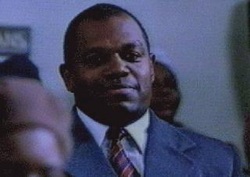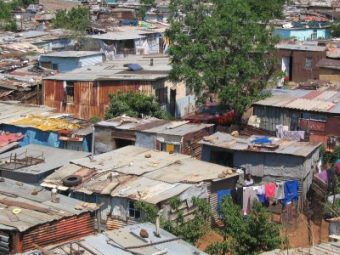Cry, the Beloved Country
Real-Life Connections
Photo retrieved from: archives.obs-us.com
Hunger Strikes
In Chapter 26, John Kumalo preaches to a large crowd about the degradation and segregation of South Africa. One of the many repercussions of his rallies was the outbreak of many strikes across the nation. One of the popular forms of striking was a hunger strike. These strikes were also very popular during the Apartheid. One of the most notorious and infamous hunger strikes, was the Great Hunger Strike of Diepkloof Prison. It erupted when twenty detainees of Diepkloof Prison embarked on an indefinite hunger strike. The popularity of this strike quickly spread throughout the prison, country, and the world. At the end of the strike over 700 detainees had participated in the strike. Strikes like these became increasingly popular, and were similar to the types of strikes that John Kumalo's rally provoked (Coleman).
Racism in U.S.
During the first half of 1900s, racism was common in many countries. South Africa was not the only country with laws that enforce racial segregation. As the book mentions in Book I during Absalom's trial, the white people felt threatened by other races in the country. Eventually they passed laws that physically separate them from different people. For example in United States during 1940s, there were laws that separated African-Americans, Japanese-Americans, and Latino-Americans from the rest of the country. Those from different races had to be in segregated schools, job, districts, community, etc. Often times these fears of different race came from the fear or feeling of being threatened by strangers. This kind of racism was thought to be right thing among the authorities until it gained public awareness in 1950s.
Shanty Towns
Picture Found From: conceptdevelopmentvi.blogspot.com
Shanty-Towns
Shanty towns are essentially extreme slums usually found in third-world countries where those in poverty are housed. Kumalo and Msimangu must travel into the shanty-towns to follow Absalom's tracks. Shanty- Towns were common in South Africa then, just as they are now.
Characteristics of Shanty Towns:
Characteristics of Shanty Towns:
- Irregular, low cost housing, self- constructed housing on usually occupied illegally
- Made of scrap metal
- One room shared by many people
- Few Utilities
- No proper roads, no clean water, no sewage
- No education provided (those in shanty towns usually cant get out)
- Shanty-towns in South Africa are known as townships, still used after Apartheid
England during Industrial Revolution
Although rapid changes sometimes might result in growth of economy, it often brings other issues that come from lack of preparedness. From beginning part of Book I, it states that one of the problems of Johannesburg is overpopulation. Because there are not enough spaces and jobs when there are too much people, it causes problems in the function of the city.A similar situation took place during the Second Industrial Revolution in the late 1800s in England. When the people were provided with more grain due to the Agricultural Revolution, the birth rate increased and therefore the population increased. There were limited number of people needed in farming; so many people were looking for jobs. When new technology was invented and factories were needed to be built, there were plenty of jobs offered and so people began to gather around the construction areas and developed cities. However, because of its rapid change, the city didn’t have many infrastructures. There were no or few light at night, no sewage system was installed, and the electricity was not provided enough. Moreover, there weren’t enough space for people to live, so people had to live in houses that were just enough for one person to lie down.


